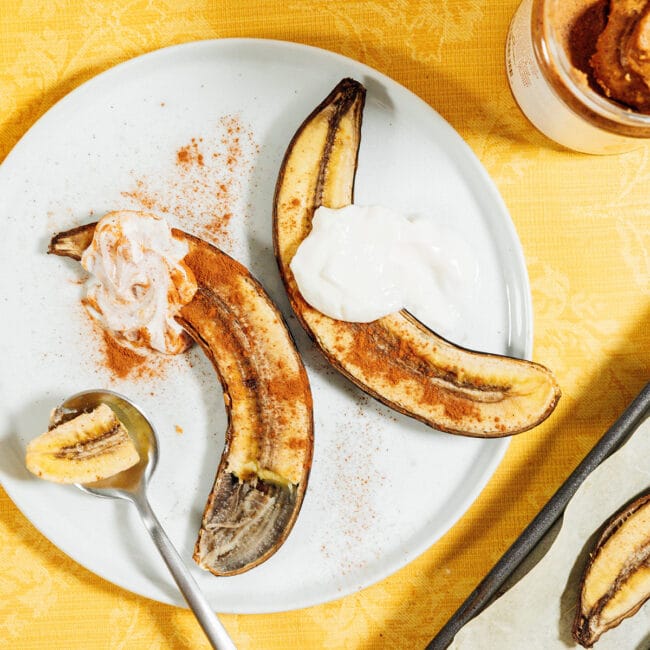Microwave Ricotta Cheese is made of three ingredients and is perfect for adding to pasta, stuffed peppers, and galettes! This 5 minute recipe creates a creamy, delicious cheese that’s better than any store-bought brand.
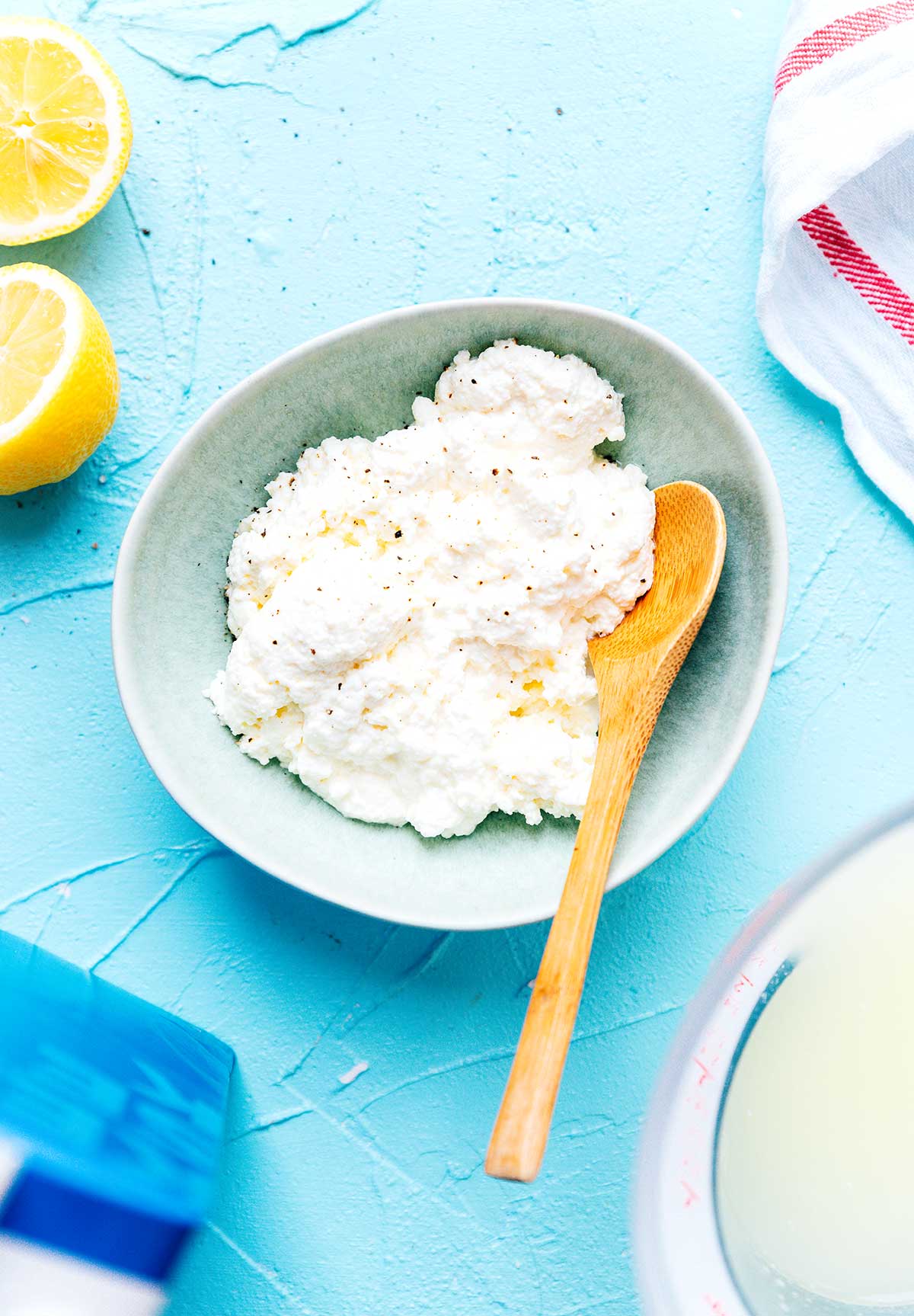
Picture this. You’re in your kitchen, ingredients gathered, ready to prepare a dish of delicious stuffed shells, when you realize you forgot one of the most important fillings: ricotta. Do you put your prep to a halt and run out to the store, making an entire trip for just one ingredient?
You could take a risk and try one of these ricotta cheese substitutes.
Or…get crafty and you make your own ricotta!
With this easy microwave ricotta cheese recipe, you’ll see just how easy it is to whip together a bowl of creamy ricotta. I’ll even go as far as to say it’ll probably taste better than what you could find in the store! It’s got a creamier, richer texture that’s hard to beat. Plus, making your own means you can make the exact amount that you need for whatever dish you’re preparing. Leftover ricotta is officially no more.
The truth is, this homemade ricotta packs a huge punch in the flavor department. Oh, and did I mention that it only takes 5 minutes to make and uses just three ingredients? Let’s dive in!
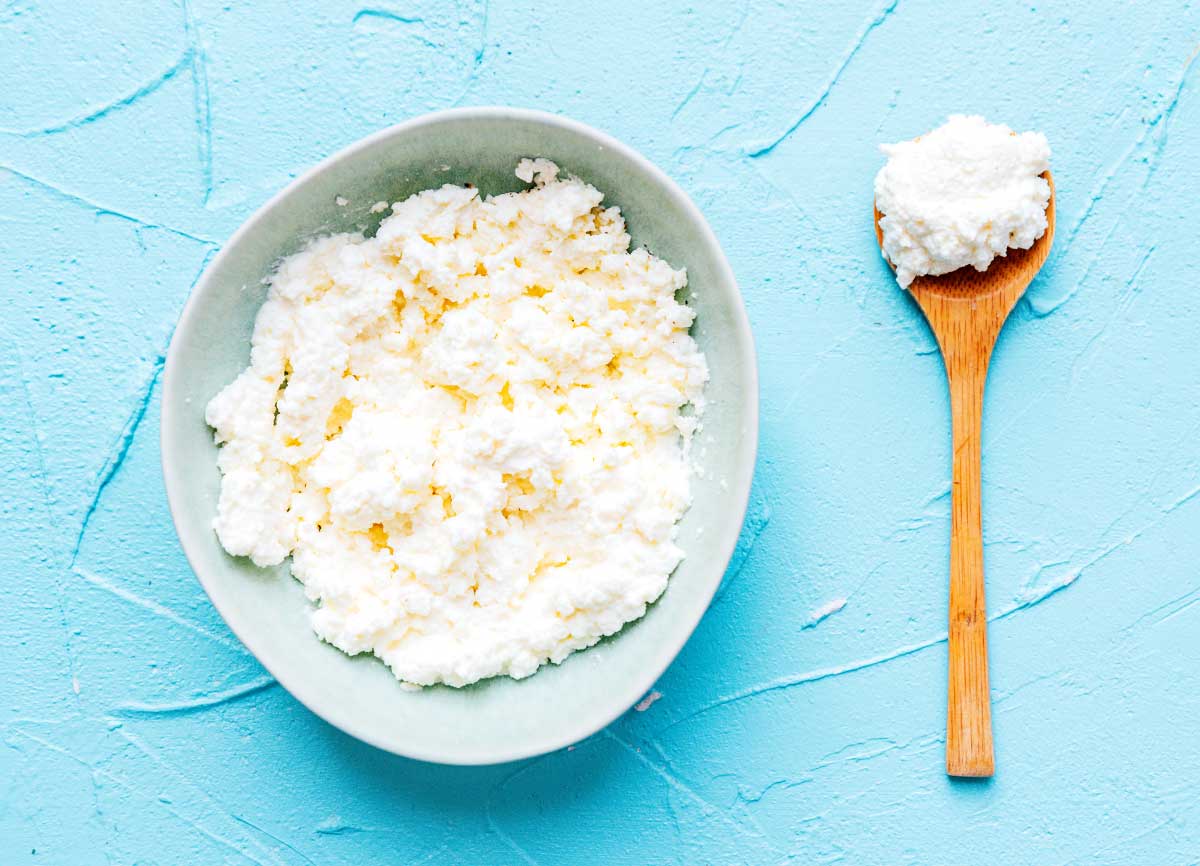
Ingredients used to make ricotta cheese
This 3-ingredient ricotta is great for your ease of mind. By making your own, you know exactly what’s going into your recipe, which in this case means three all-natural ingredients. Your cheese will be free of preservatives and chemicals, which can’t be said for all store-bought versions. Here’s a breakdown of what’s included.
- Whole Milk: Whole milk makes up the base of the ricotta. You’ll need 2 cups for this recipe.
- White Vinegar or Lemon Juice: You can use either white vinegar or lemon juice to curdle the milk. 2 tablespoons should do the trick.
- Salt: Finally, a dash of salt does wonders for the flavor of this cheese. Use ½ tsp for a perfectly salty finish.
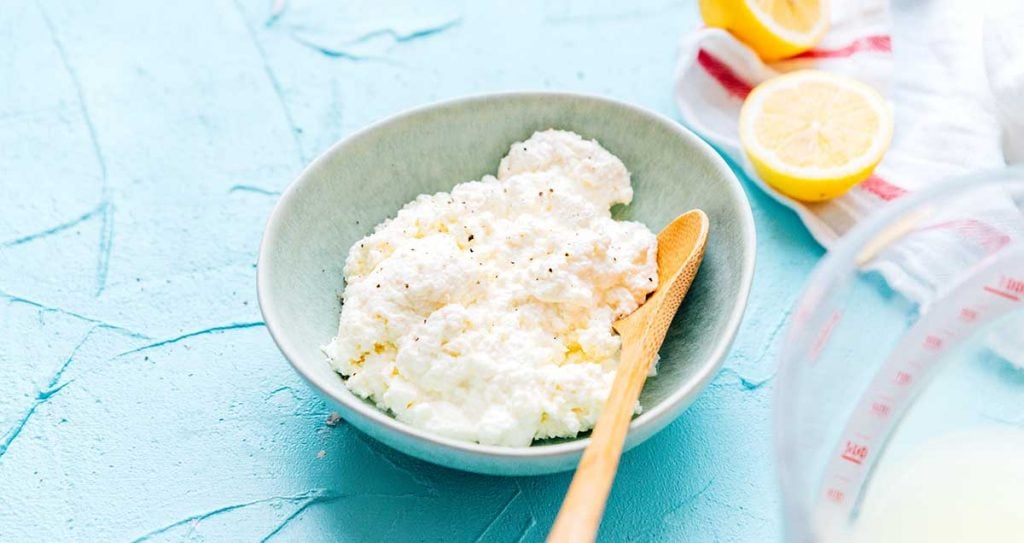
How to make microwave ricotta cheese
Get ready for the easiest homemade cheese recipe you’ve ever made! This particular rendition requires only 2 minutes of prep time, followed by 3 minutes of “cook” time. It’s a recipe that can be made in a pinch and used for whatever dish you’d like (helloooo baked ziti).
Step 1: Cook the milk
First, add the milk to a microwave safe bowl, and then microwave it on high for 3 to 5 minutes. If you have a kitchen thermometer, the milk should reach between 185°F and 200°F.
Step 2: Curdle the mixture
Next, add vinegar or lemon juice to the milk and stir briefly to combine. Let it sit undisturbed for 1 to 2 minutes. During these couple of minutes, the milk should separate into white curds and yellowish liquid. You can test this by dragging a spoon through the bowl. If the milk doesn’t curdle and the liquid is still white, add another tablespoon of lemon or vinegar and microwave for another 30 seconds.
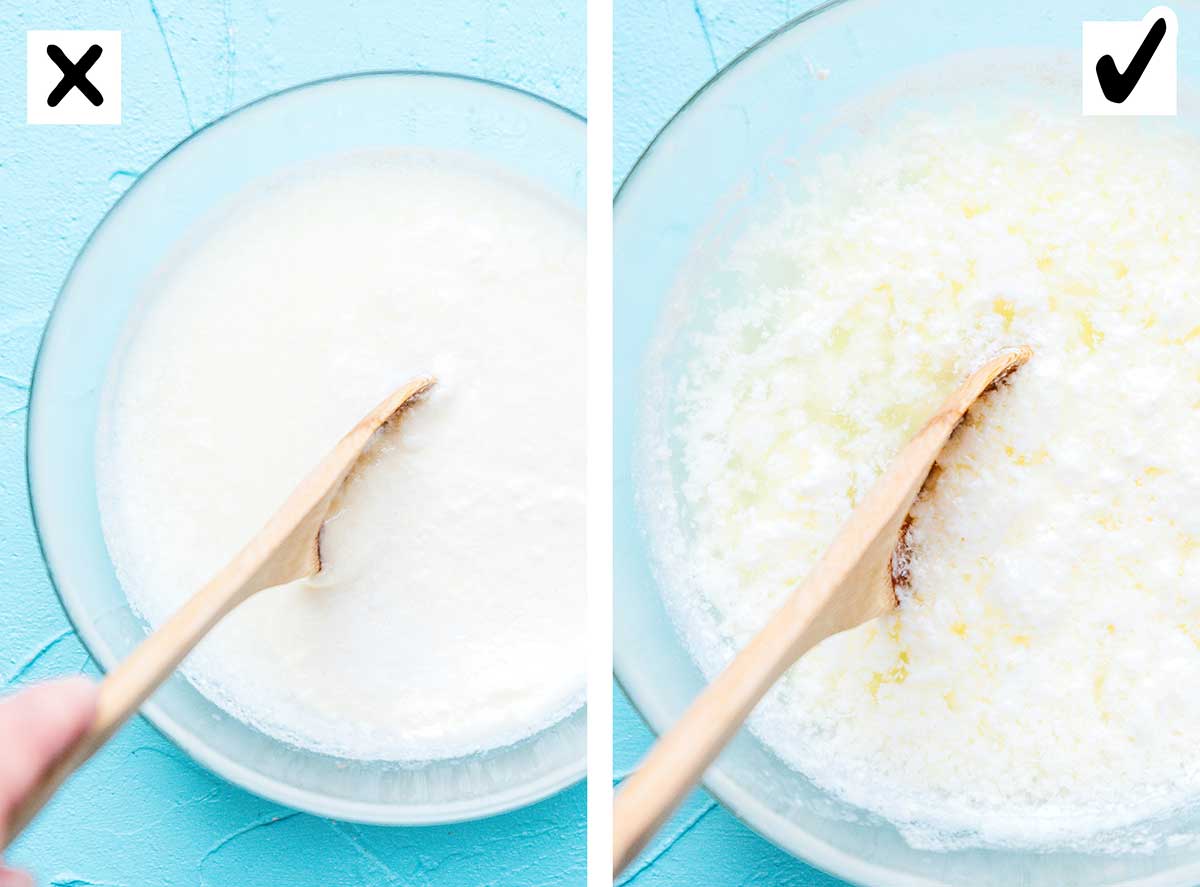
Step 3: Strain the whey
Lay a clean cloth or sturdy paper towel in a wire mesh sieve, and set it over a large bowl. Pour the milk mixture into the sieve to strain out the liquid whey. You can let your ricotta strain for up to 1 hour. The longer it sits, the firmer your ricotta will be. This part is up to you. I like it fresh and warm, so I only strain it for a few minutes. Once the ricotta is finished straining, stir in the salt.
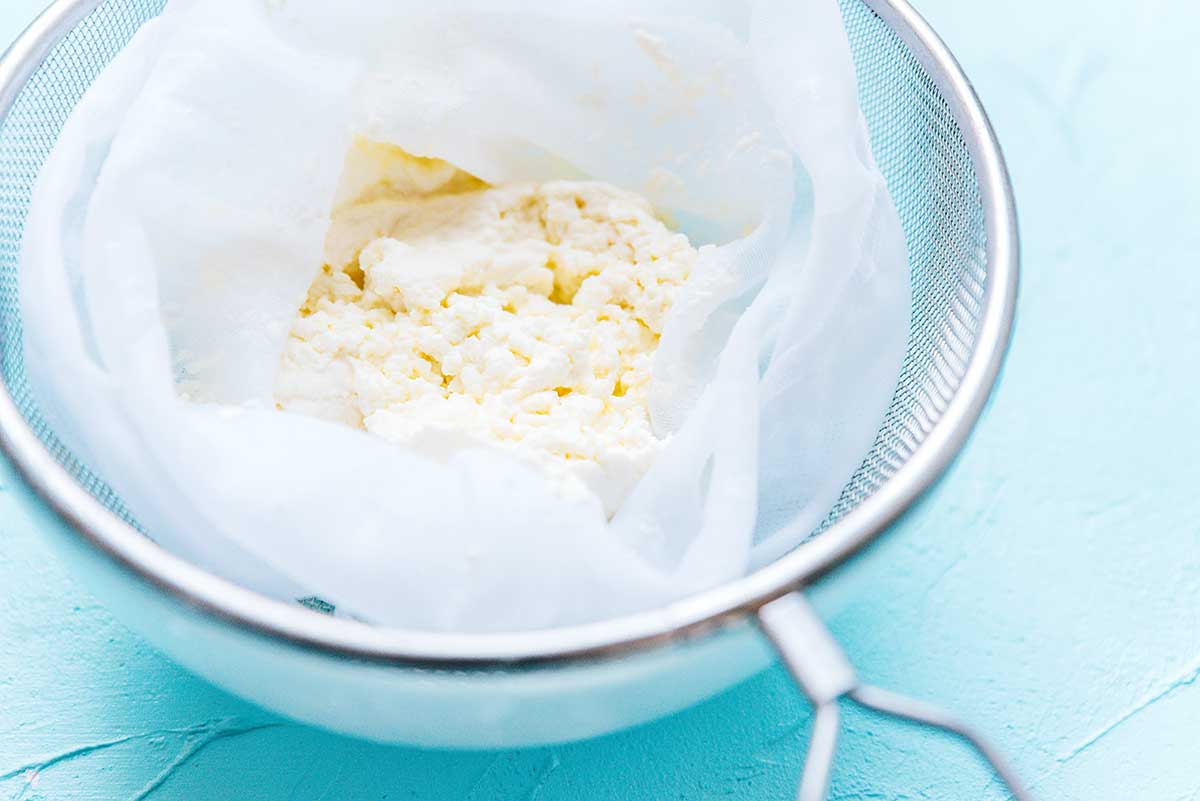
Tips for making ricotta cheese
Here are some easy ricotta cheese hacks that you may find useful!
Stick with whole milk
I recommend sticking with whole milk when making ricotta cheese, as the high fat content helps to achieve the desired texture and consistency. You may be able to get away with using 2%, but skim milk won’t work well.
Use the leftover liquid
You can actually save the liquid whey that’s collected during the straining process and use it as a protein booster in smoothies! This is why we don’t add the salt until last, as doing so prevents the whey from getting salty. No salt means it can be added to both sweet and salty dishes!
Ricotta vs cottage cheese
Truth be told, ricotta and cottage cheese are pretty different. Ricotta tends to have a softer, grainy texture, whereas cottage contains thicker curds. This is due to the different processes of making the two. Cottage cheese often has the addition of animal rennet, heavy cream, and/or buttermilk
Adding an egg
People sometimes add eggs to their ricotta cheese to help bind the cheese together and keep it from being too runny. This is most commonly done when it’s being used in casserole or lasagna type dishes. If these are on the menu, you can consider adding an egg by mixing one with the drained ricotta.
Storing ricotta
Microwave ricotta cheese should be stored in an airtight container and kept refrigerated. Be sure to eat within 4 to 5 days.
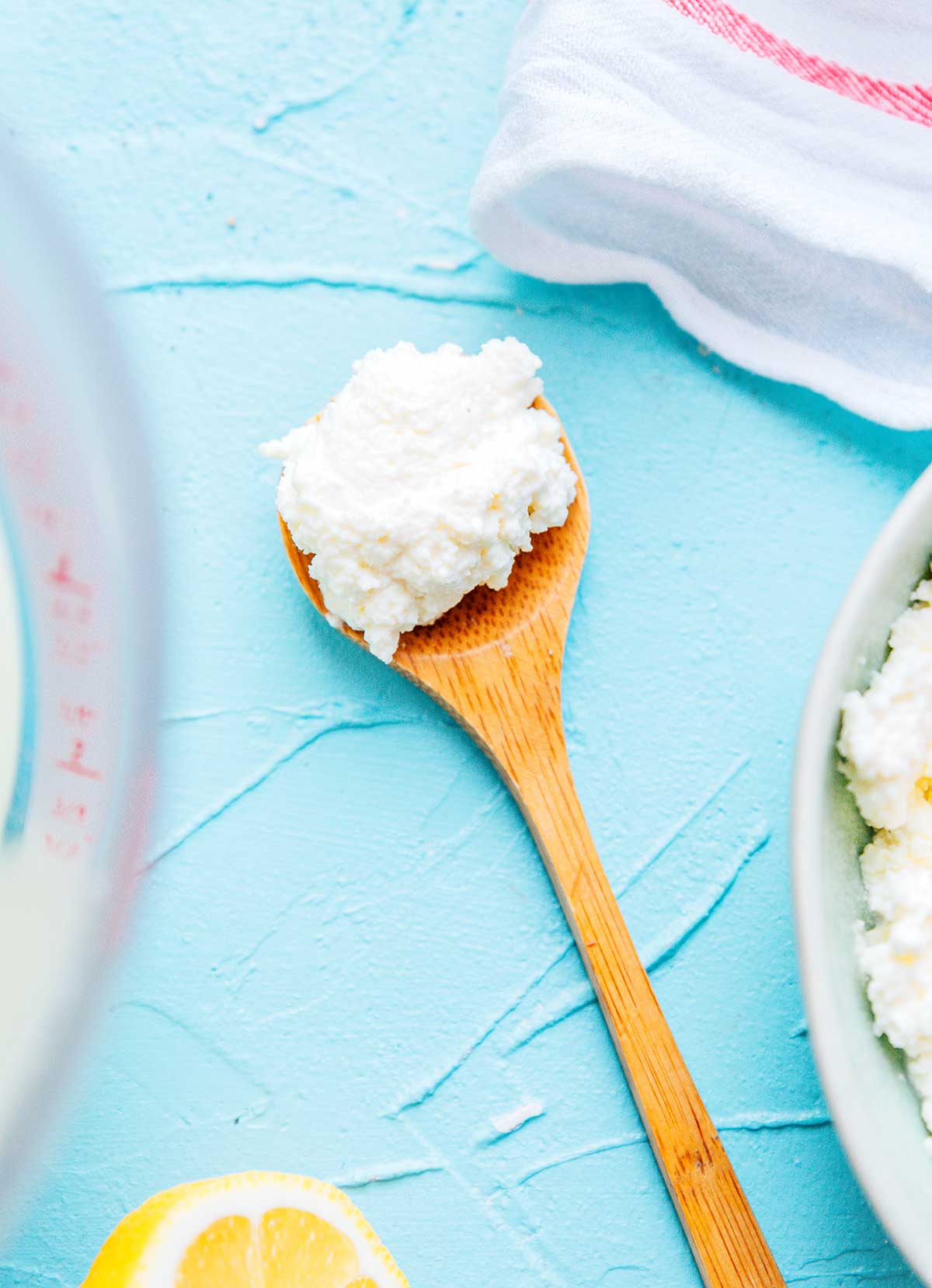
Recipes to use this homemade ricotta in
Once you complete this recipe, you’ve gotta have a reason to use it… that is, if you don’t eat all of it straight from the bowl while it’s warm. It really is that good! Here are some delicious recipes that call for ricotta cheese.
- Ricotta Stuffed Peppers
- Blueberry Ricotta Galette
- Savory Butternut Beet Galette
- Vegetable Baked Ziti
- Rainbow Vegetable Tart
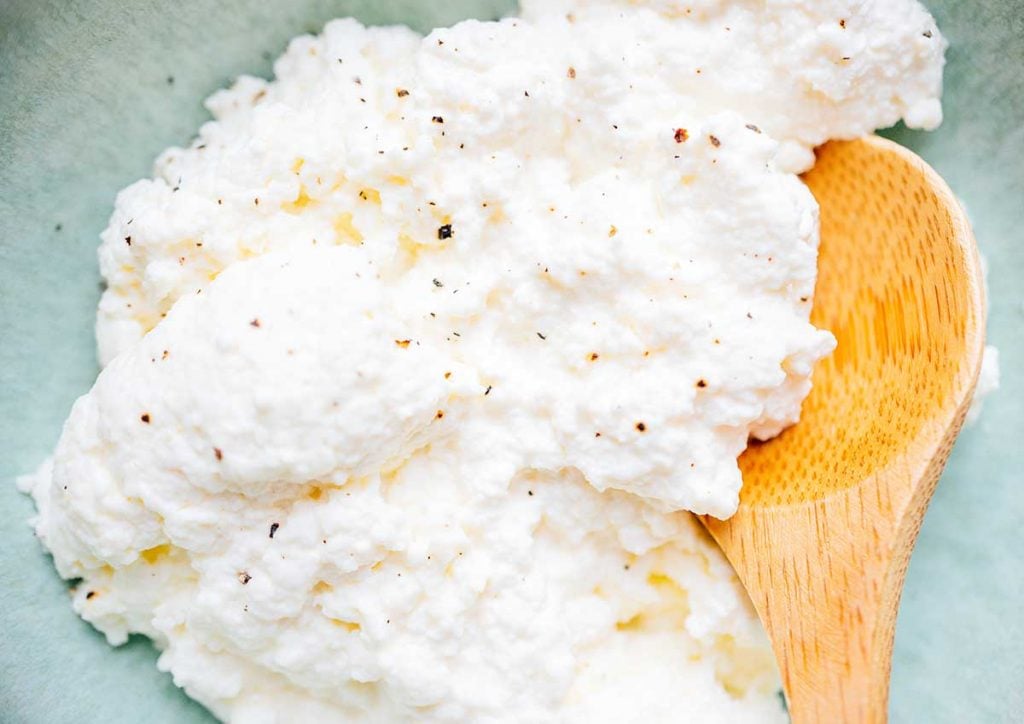
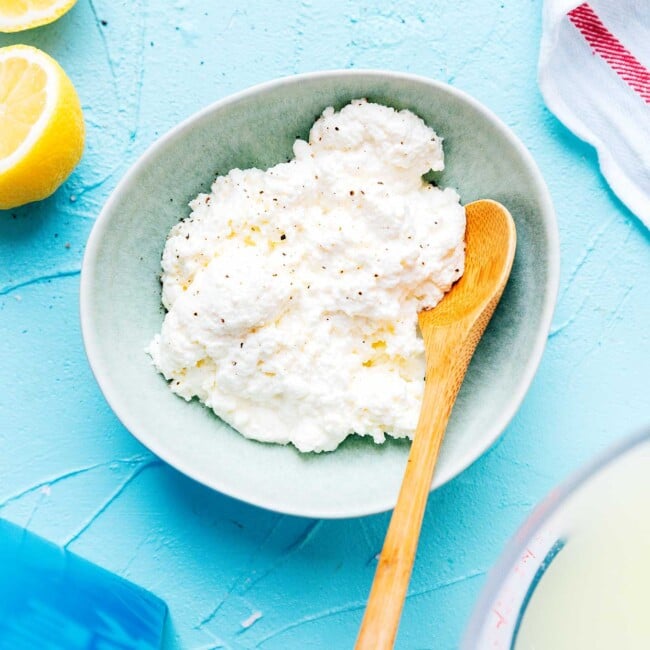
Ingredients
- 2 cups whole milk 475 mL
- 2 Tbsp white vinegar or lemon juice 30 mL
- ½ tsp salt
Instructions
- Cook: Add milk to a microwave safe bowl, then microwave on high for 3 to 5 minutes (if you have a kitchen thermometer, milk should reach between 185°F and 200°F).
- Curdle: Add vinegar or lemon juice, stirring briefly to combine. Let sit undisturbed for 1 to 2 minutes. Milk should separate into white curds and yellowish liquid (test it by dragging a spoon through the bowl). If milk doesn’t curdle and the liquid is still white, add another tablespoon of lemon or vinegar and microwave for another 30 seconds.
- Strain: Lay a clean cloth or sturdy paper towel in a wire mesh sieve, and set over a large bowl. Pour the milk mixture into the sieve to strain out the liquid whey. You can let your ricotta strain up to 1 hour. The longer it sits, the firmer your ricotta will be (though I like it fresh and warm, strained for just a few minutes). Stir salt into ricotta when finished straining.
Tips & Tricks
- Store ricotta in an airtight container in the fridge for 4 to 5 days.
- Use the leftover liquid whey as a protein boost in smoothies! (This is why we don’t add the salt until last, so your whey doesn’t get salty and can be added to sweet or savory dishes.)
Nutrition Information
I first published this recipe on Amanda’s Cookin’.





